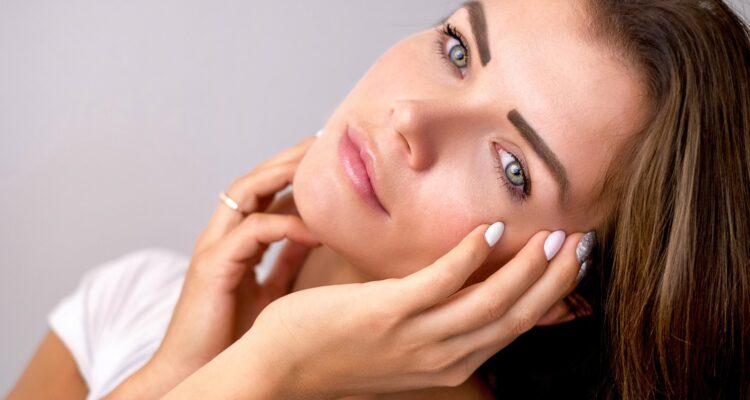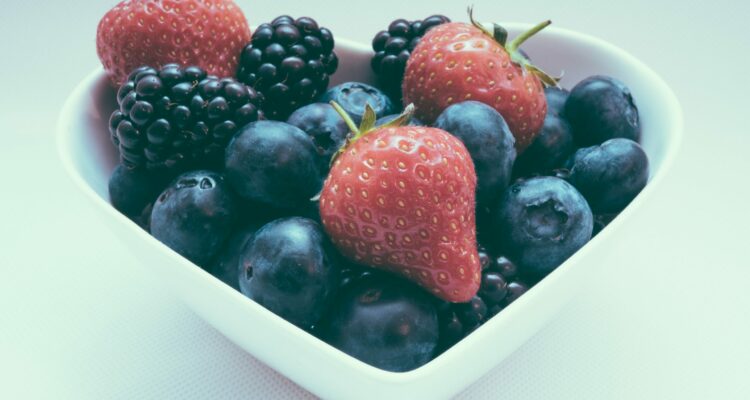
The skin covers about 22 square feet for the average adult and is the first line defense against harm from infection, chemicals, temperature and UV light. It is a stretchy, waterproof covering that also provides some cushioning. Its elasticity allows free motion across joints while it keeps out toxins and pathogens. The shock absorbing properties protect underlying muscles, bones and organs from trauma. The skin is also home to a variety of nerve endings for sensing pain, temperature, vibration and touch.
Skin is composed of three layers: the epidermis, dermis and hypodermis. The outermost layer, or epidermis, is composed of keratinocytes that form a tight fitting waterproof coating around the body. Interspersed melanocytes produce the melanin that gives the skin its tone which tints adaptively over days to the amount of UV light that is absorbed. A base layer of stem cells allow the top skin layer to completely replace itself every 3-4 weeks allowing superficial cuts and damage to heal without blemish or scarring.
The middle layer, or dermis, contains sweat and oil glands, hair follicles and a large network of blood vessels and gives the skin its strength and rubberiness with its vast arrays of collagen and elastin fibers. The blood vessels help with thermoregulation by dilating to cool or constricting to warm modulating the amount of surface blood flow. Sweat glands also can provide extra cooling when needed via water to gas heat transfer through evaporation. The sweat glands also help to keep the skin’s surface pH low by secreting lactic acid which is unfriendly to bacterial and fungal pathogens. Even when we are not noticeably sweating we lose about a half liter of fluid a day from the skin’s surface. The hair follicles add insulation and UV protection and oil glands help maintain a waxy moisturizing coating protection through the secretion of sebum which locks in hydration and helps repel toxic chemicals and pathogens away.
The innermost layer, or hypodermis, connects the skin to the underlying bones and muscles, and provides a conduit for nerves and blood vessels to traverse the body. It is composed primarily of fat containing adipocytes that make up the layer of shock absorption, extra insulation and store of energy.
As a sensory organ the skin has a variety of different nerve receptors located in all layers. These sensors can detect and relay signals to the brain regarding temperature, pain, noxious chemicals, vibration and light and heavy pressure. This allows for the body to recognize not only pleasant stimuli but also when tissue injury is occurring so that it may react appropriately to reduce the damage.
To read the Next Level’s newest blog about Sunburn and Itchy Bites click Summer Bummers
Keratinocytes in the epidermis with the help of UVB light for energy can synthesize a precursor to hormone vitamin D (yes, hormone not a true “vitamin”) from cholesterol which is later converted by the liver and then kidney to active vitamin D3.
Skin Deep
Your skin surface is home to over 1.5 trillion microbes including bacteria, fungi and mites. Don’t worry, for the most part they think you are a good host and would give you a positive Google review. Some are commensal (not harmful) and some are mutualistic (beneficial).
The benefits include:
- Competing for space and nutrients with harmful microbes and crowding them out.
- Flourishing in and supporting the low surface pH that bad bacteria don’t grow well in.
- Communicating with your immune system to monitor for harm.
- Secreting chemicals against potential harmful pathogens.
- Reducing oxidative stress and inflammation to slow the aging process, repair skin damage and to expedite wound healing.
- Rejuvenating the skin’s sheen and softness by breaking down dead keratinocytes and helping with hydration.
Please support your skin’s flora by consuming plenty of dark green and orange fruits and vegetables, nuts, eggs, fish, fortified grains and monounsaturated oils like avocado and olive rich in vitamins E, A and the B’s. Use moisturizer frequently preferably with hyaluronic acid to help maintain the low pH. Avoid hand sanitizers that dry the skin and antibiotic containing soaps that will kill the good bacteria on your skin. Choose unscented or aloe-containing hydrating soaps for sensitive skin.
Cut and Wound Do’s and Don’ts
- Do stop the bleeding with constant pressure with a clean bandage or cloth but don’t frequently check it dislodging the forming clot and slowing the hemostatic process.
- Do irrigate with clean tap water thoroughly and check for foreign bodies.
- Do clean it out with soap and water then rinse well and pat dry but don’t use hydrogen peroxide or alcohol or rub dry which can damage the tissue further.
- Do use petroleum jelly or vaseline frequently to keep the wound clean and moist but don’t use antibiotic ointment that kills beneficial skin flora and is irritative.
- Do keep covered with a clean covering like Nexus or liquid bandages but don’t let it dry out causing excessive scabbing or pick off scabs which slows epithelialization.
- Do make sure your tetanus booster is up to date and watch for signs of infection like expanding redness, red streaks, pus, swollen glands, fever and increasing pain.
Sarah’s Weight Management Corner
Quit blaming the innocent bystander. It is the butter, cheese, bacon, bologna, sausage, mayonnaise, sauces, jelly, peanut butter, cream cheese and other stuff that you put on or between the bread slices that can put on the pounds. Go lite wheat, no mayo. Blame the spread, not the bread.
John’s Healthy Lifestyle Corner
Start using the power of positive thinking. Stop looking at your flaws or dwelling on past failures. Start taking stock of your assets and strengths while planning for future success. Focus on what you can impact, not what you cannot. Lean forward, not backward.



